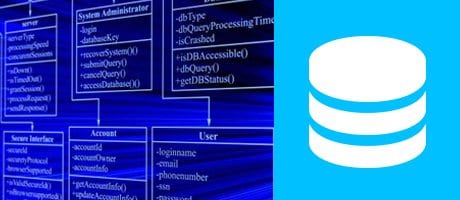Suitable for all users. You will learn the foundations of this topic. If you are a beginner, or want to brush up on existing skills, this course will benefit you.
Suitable for All Levels
2 Day Classroom Course
Certification Awarded
Study materials included
Skills You will have at the end of the Course
Understand what a relational database is.
Examine the following database platforms
Microsoft Access.
Microsoft SQL Server.
Oracle
MySQL
Create a Database.
Understand Database Normalisation.
Create ad-hoc SQL Queries.
Create efficient SQL Queries.
Understand SQL errors, and how rectify them.
Indexing for Better Performance
Good database practices to be followed.
Examine different flavours of SQL
ANSI SQL
T-SQL
P/L-SQL
Course overview
This course starts by explaining what a database is, and moving on to creating databases containing tables and views, and stored procedures.
Requirements
None
Certification
At the end of the course, you’ll be Certified by the Irish Academy of Computer Training
Who would benefit
If you a Report Writer, Data Analyst, Software Developer, Web Developer, or a Programmer, then databases should be one of the technologies in your “To Learn” list. If you don’t know how modern databases work, or want to learnt SQL the language used to work with databases then this course will benefit you.
Why take the Course
To understand how databases work. To help develop good SQL habits. To examine common SQL functions.
Classroom only
Course curriculum
Section 1: Introduction to Databases
- Understand what a database is.
- Build a database.
- Datasheet view.
- Design view.
- Field Data Types
- Create database objects
- Tables
- Queries
- Views
- Stored Procedures
- Primary Keys.
- Foreign Keys.
- Referential Integrity.
- Relationship Types.
- Working with
- Microsoft Access
- SQL Server Management Studio
- Oracle SQL Developer
- MySQL Workbench
Section 2: Creating Relationships between Tables
- Using Relationships to Link Tables
- Referential Integrity
- Relationship Types
- One To One
- One To Many
- Many To Many
Section 3: SQL Basics
- Retrieving Values from Table – SELECT
- Selecting specific data using a WHERE Clause
- Selecting Data Using AND, OR, NOT
- Selecting Distinct Values from Column – DISTINCT
- Sorting the Data Using ORDER BY
- Limiting the Data Retrieved Using TOP or LIMIT
- Selecting Data with a Range – BETWEEN
- Creating Table and Column Aliases – AS
- Selecting Data which has one of Multiple Values – IN
- Using LIKE and WILDCARDS * % _ ?
Section 4: More Complex SQL
- Grouping data – GROUP BY
- Aggregating Functions
- SUM
- MIN
- MAX
- AVG
- COUNT
- ABS
- SIGN
- MOD
- FLOOR
- CEILING
- POWER
- ROUND
- SQRT
- Creating a Database – CREATE DATABASE
- Removing a Database – DROP DATABASE
- Creating a Table – CREATE TABLE
- Inserting Values into Table – INSERT INTO
- Updating or Modifying Data in a Table – UPDATE
- Deleting Data from a Table – DELETE
- Deleting a Table – DROP TABLE
- Deleting all values in Table – TRUNCATE TABLE
- Understand a Table’s structure SP_HELP / DESCRIBE
- Altering a Table’s Structure – ALTER TABLE
- Copy Table with INSERT INTO SELECT
- Combine the Tables – UNION
Section 5: Multi Table Queries
- Using Joins to Combine Tables
- INNER JOIN
- LEFT JOIN
- RIGHT JOIN
- FULL JOIN
Contact us.
We'll reply quickly.
Enquiry
I understand that my personal data is being processed in accordance with the privacy notice and accept the terms and conditions of use.

